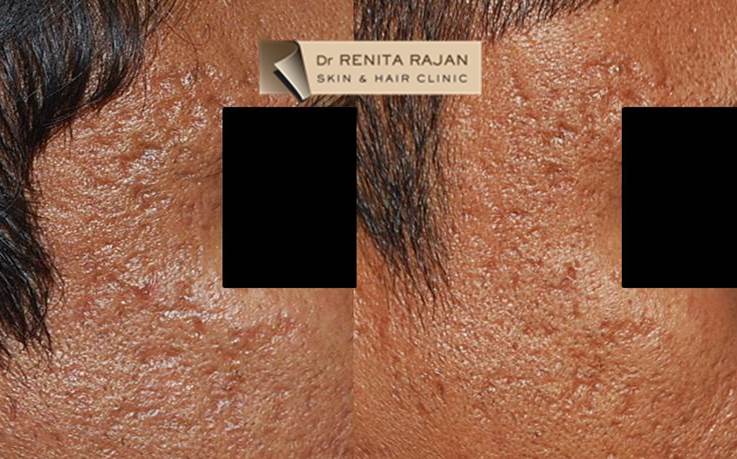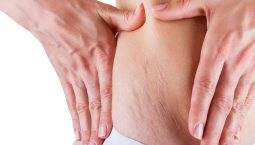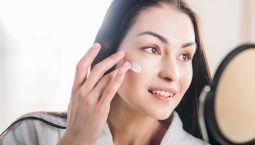Scar revision or correction can be done in many ways.The outcome of the treatment and the choice of the treatment depend on the characteristics of the scar. These factors include skin type of the patient, extent of scarring, duration of the scar, cause of the scar – acne,post surgery, chicken pox etc, depth of the scar, and type of the scar itself. Also, it is important to know whether there are keloids/ exuberant scars elsewhere on the body. Similarly, it is important to assess the general health of the person undergoing scar correction, since all these factors are important in achieving good results.
Scars due to acne are broadly classified as elevated or raised and depressed scars. In medical terms, that would be hypertrophic and atrophic scars, respectively. Atrophic scars are far more common than hypertrophic scars, but the latter are much more difficult to treat. Atrophic acne scars can be further divided into rolling, boxcar and icepick scars.Treatment options for acne scars include the following.
Subcision – where a needle is used to lift the floor of the scar, and release the scar from its attachment to the surrounding skin. This is the best option for rolling scars, and works even better when combined with suction. Dr Renita Rajan pioneered the use of Vicryl threads for advanced Subcision of acne scars – this innovation gives thorough and better volumetric correction of acne scars.
Dermaroller – where multiple needles mounted on a hand held device, are used to create tiny wounds in the skin, which when they heal, lift up the acne scars with them.
Dermabrasion – where a manual/ motor dermabrader is used to remove the superficial layers of the skin in a controlled fashion, to improve the textural aberrations caused by acne. This procedure involves some downtime, and so needs to be planned with that in mind.
Microdermabrasion – is often used in combination, or as a finishing procedure in a series of acne scar revision treatments. Used alone, this technique requires several sittings to see significant results. Also, for scar resurfacing, a higher setting needs to be used than for indications like rejuvenation.
Chemical Peels – are very useful in managing superficial scars, and often require to be combined with another procedure for deeper scar correction. They can also be used in combination with procedures like subcision and after dermaroller, to improve the final outcome.
Chemabrasion – this involves the use of chemical peels in combination with a dermabrasion/ microdermabrasion procedure.
Fractional resurfacing – this involves the use of LASER/ radio-frequency energy to create tiny wounds in the skin, which lift the scars as they heal.
Scar excision – sometimes, a scar can be easily removed, while still maintaining the cosmetic outcome.
Punch floatation – in deep scars, the floor of the scar is raised using this technique.
Filler therapy – this technique involves the use of hyaluronic acid fillers/ fat/ silikon to lift the scar base.









